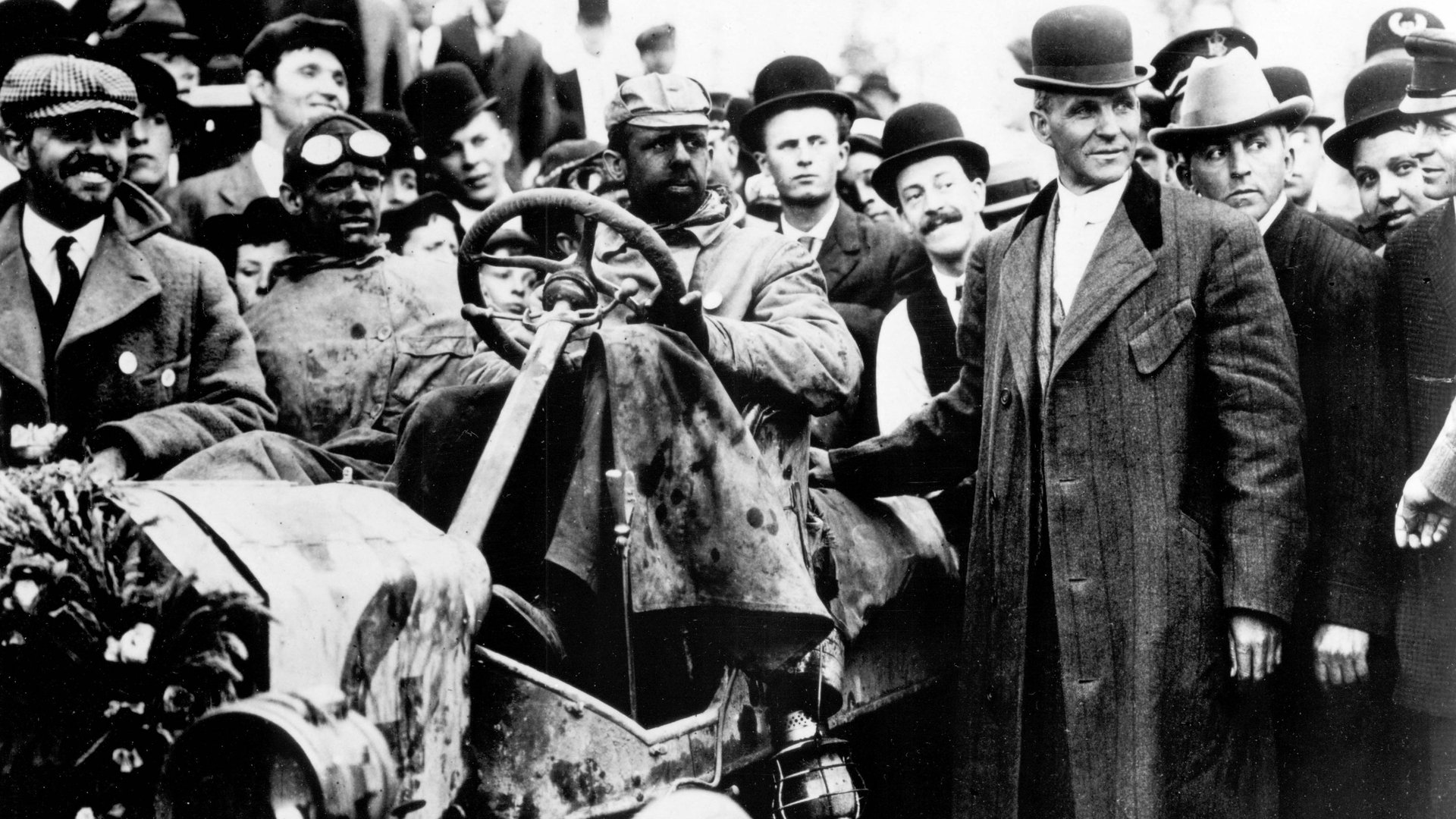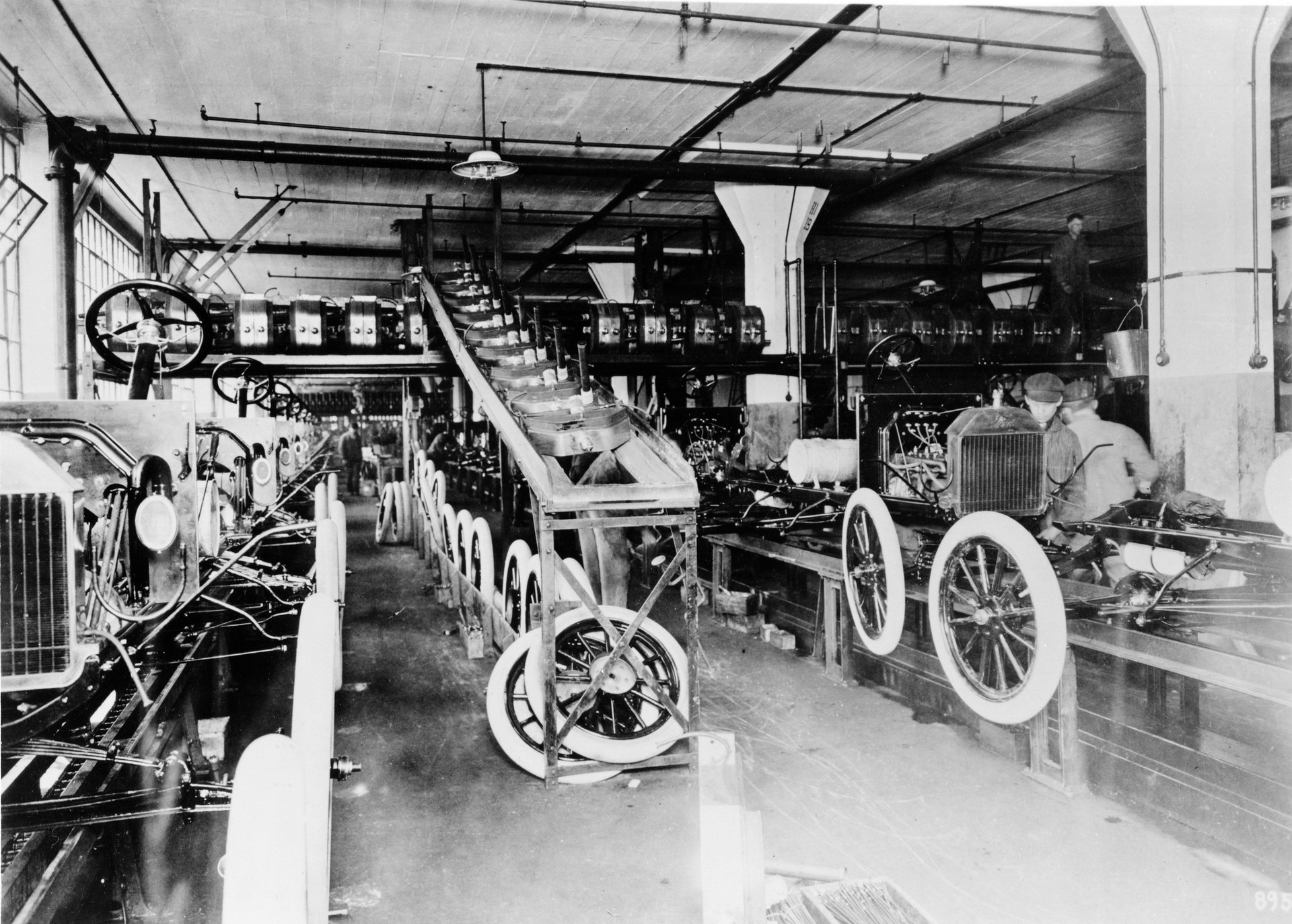The car that actually changed the world had a much quieter rollout than Tesla’s Model 3
Elon Musk is introducing Tesla’s first mass-market electric car to the world like it will become a garage staple. Never one for subtlety, Musk staged an elaborate handover ceremony to the first 30 buyers of the Model 3 last night (July 28) in front of hundreds of people outside the company’s California factory. The event, of course, was streamed live.


Elon Musk is introducing Tesla’s first mass-market electric car to the world like it will become a garage staple. Never one for subtlety, Musk staged an elaborate handover ceremony to the first 30 buyers of the Model 3 last night (July 28) in front of hundreds of people outside the company’s California factory. The event, of course, was streamed live.
Compared with the subdued launch of Ford’s Model T—a car that actually did change the world—Musk’s big reveal was filled with drama, a display of his confidence that his new vehicle will be revolutionary.
But Musk might be putting the cart before the horse. Ford didn’t toot their own horns prematurely—”[They] thought it was an evolutionary model, but it was a revolutionary model,” says Nancy Darga, executive director of the Piquette Avenue Plant museum—but Tesla’s flashy event and big promises might set it up for a let-down.
The Model T would go on to make cars an affordable necessity and shape America’s car-centric infrastructure. Its selling points included its enclosed transmission, how light the car was (so it wouldn’t get stuck in the mud on the largely dirt roads of the time), and, of course, the price: $825.
Ford wasn’t so ostentatious about its innovation. When they rolled out of the Piquette Avenue plant in Detroit in October 1908, ”there was no invite for the press,” Ford historian Mike Skinner tells Quartz. “They just shipped them to the dealers.”

But dealerships weren’t ready for them. Ford sent out Model T brochures in early 1908, but Skinner says car salesmen tucked them away. “We have carefully hidden the sheets away and locked in a drawer, throwing the key down the cold-air shaft,” one Illinois Ford dealer said, according to David L. Lewis’s book The Public Image of Henry Ford: American Folk Hero and His Company.
Worried this flashy new vehicle would render the rest of their lot a practical junkyard, they wanted to ignore it and sell the inventory they already had. So Ford met them halfway with a calculated release that would give them time to sell their existing stock instead of throwing a Musk-style car carnival. ”We didn’t want to mess up the dealers out there [by saying] ‘Hey, forget about the old thing,'” Robert Kreipke, Ford’s corporate historian, told Quartz.
Like with the months leading up to the Model 3 launch, the press was abuzz. Horseless Age and Motor Age published diagrams and photographs of the new car, and once ads started to pop up in newspapers, demand was unrelenting. ”Once loosed, the cataract of orders flowed unchecked,” Lewis writes. “In the fall of 1908 demand ran so far ahead of production that the company could insist that it would supply Model T’s only to those dealers that sold all of the previous models on hand.”
Demand might be a challenge for Musk as well.
“The thing that’s going to be a major challenge for us over the next six to nine months is how do we build a huge number of cars,” he said on stage last night in front of his fans and employees. “Frankly, we’re going to be in production hell. Welcome to production hell.”
While the introduction of the Model T may not have been flashy, Ford still loved a good spectacle. Shortly before the Model Ts were making their way to dealerships, Henry Ford and two associates drove one of the cars 1,357 miles from Detroit to a hunting trip outside of Milwaukee and back again. The three men rolled up on Oct. 2, “feeling fine and immensely enthusiastic over the remarkable performance of this new car,” the Detroit Free Press reported at the time. The next year, the car was used to win the American Transcontinental Race from New York to Seattle, which was another perfect photo opportunity for Ford.
The Model T really took off after Ford launched the assembly line in 1913, which slashed the cost of the Model T to $250. It put them within the reach of millions of Americans, and Ford produced 15 million of the iconic cars until they were discontinued in 1927.
Fast-forward to Musk in 2017 and the electric Model 3’s splashy entrance. That fanfare won’t dictate the car’s success, but “time will tell,” Kreipke says.